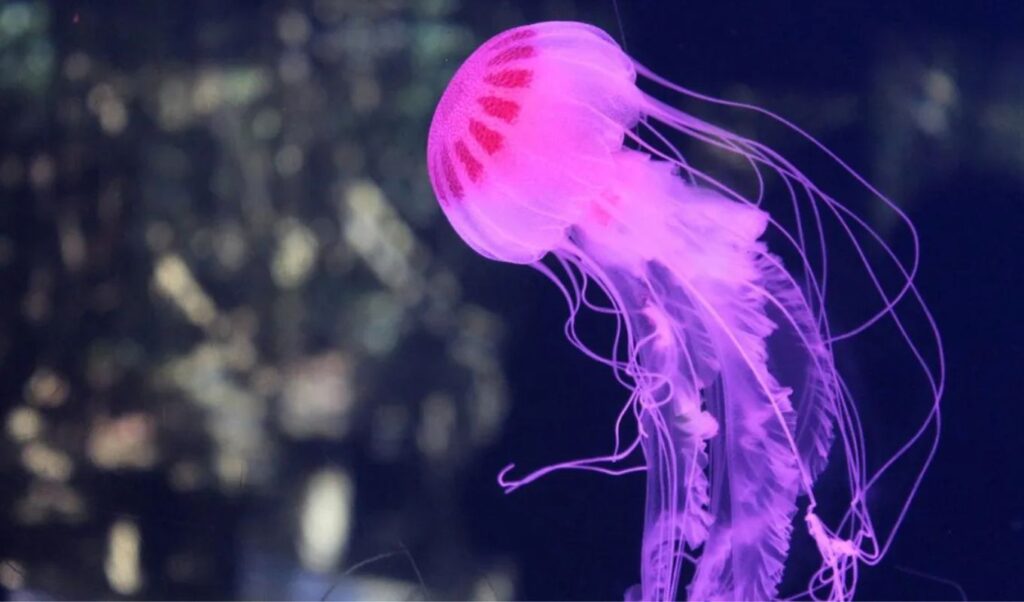Growing concern has been sparked by the continuously increasing presence of purple jellyfish (Pelagia noctiluca) in Greek marine areas, with experts warning about their expansion to Attica beaches and swimmers demanding immediate information and protection.
The surge is primarily recorded in the Pagasetic Gulf, where most sightings have been documented, while the spread is extending at an alarming rate toward Northern Euboea, Chalkida, and the Northern Sporades, with confirmed presence in Skiathos and Skopelos.
Map showing purple jellyfish sightings in Greece

Health authorities’ advice
While purple jellyfish stings are not dangerous for the majority of the population, swimmers need to know what they can and cannot do in such an event.
The purple jellyfish belongs to the Pelagiidae family and is the only currently recognized species in its genus. A relatively small and colorful species, both its tentacles and (unusually for jellyfish) bell are covered with stinging cells. Sting incidents are common, painful, and symptoms may persist for extended periods, but are generally not dangerous, according to health authorities.
The nematocysts produce redness, swelling, and burning sensations on human skin, as well as sometimes serious dermonecrotic, cardio- and neurotoxic effects, which are particularly dangerous in sensitive individuals.
Symptoms after contact or sting from the jellyfish may include burning pain, often intense skin redness, and in some cases the appearance of the jellyfish’s imprint on part of your skin, nausea, blood pressure drop, tachycardia, headache, vomiting, diarrhea, bronchial spasm, and difficulty breathing, according to health authorities.
What purple jellyfish stings cause
- Intense stinging and burning (like burns)
- Redness, swelling, and linear rashes
- In sensitive individuals it may cause:
- Nausea
- Dizziness
- Breathing difficulties
- Anaphylaxis (in very rare cases)
What to do after a sting
- DO NOT rub the area with bare hands.
- Rinse with seawater (not fresh water, as it activates the cnidocytes).
- Remove any tentacles with tweezers or a card (not with your hands).
- Apply ice packs locally (wrapped in a towel) for pain relief.
- Use antihistamine cream or painkillers (if needed).
- For serious symptoms or allergic reactions, seek medical help immediately.




